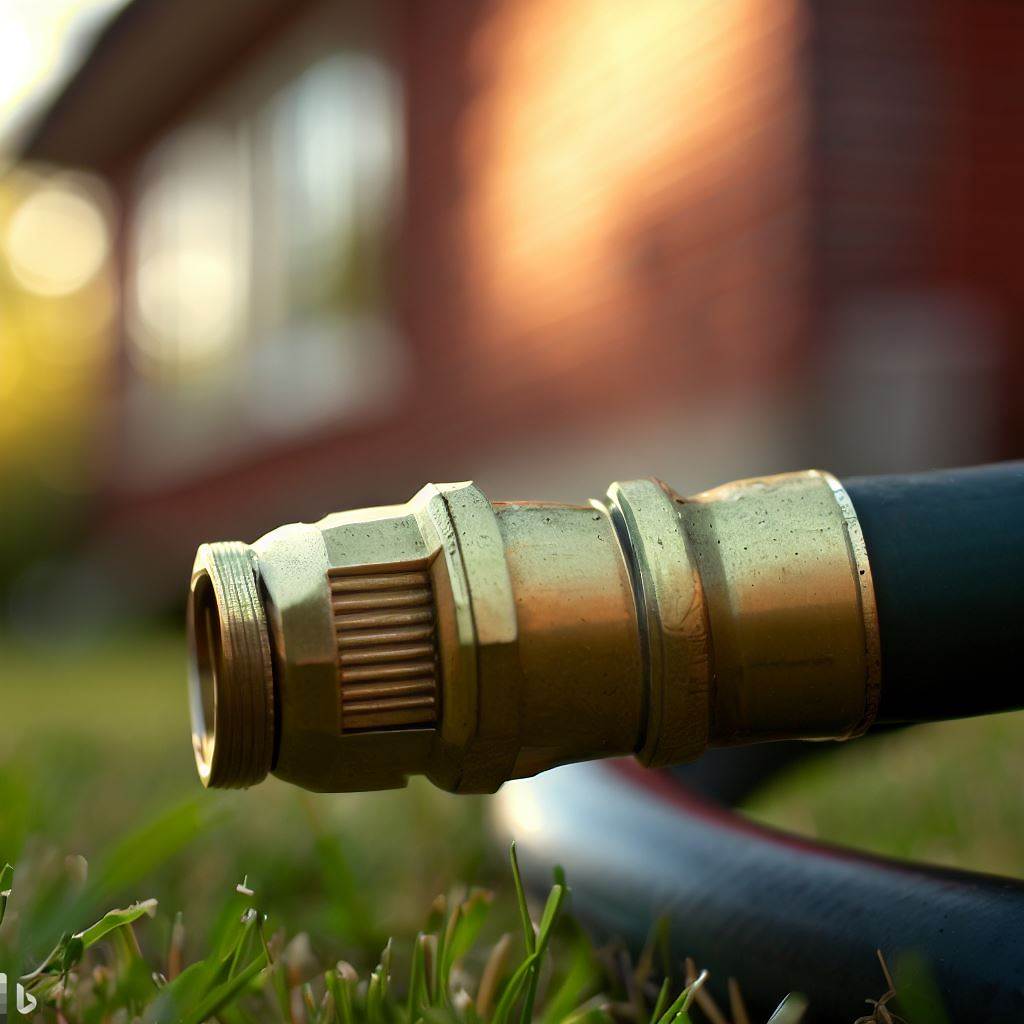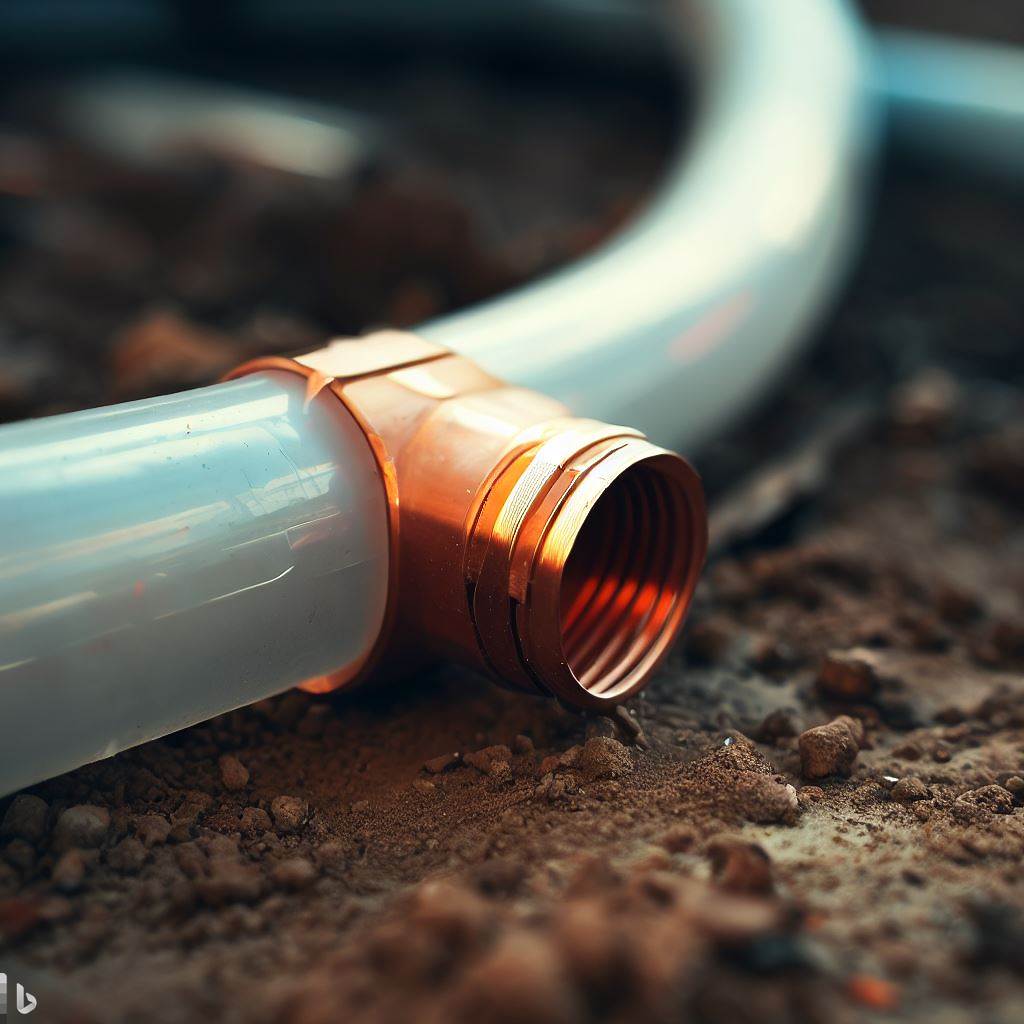Can you use PEX outside? Well, let’s delve into that. You might’ve heard the water rushing through your home’s pipes but have you ever wondered what type of material they’re made from? In recent years, many homeowners are swapping out old copper or PVC pipes for something more modern – PEX piping.
But does this miracle plumbing solution work outdoors? The short answer to this question is yes and no. While its flexibility makes it a dream to install indoors, using PEX outdoors presents some challenges.
Stay tuned as we dive deeper into the topic in the coming sections! We’ll dissect when it can be used safely outdoors and reveal tactics professionals employ to protect it against harmful elements. So strap yourself in for a riveting journey down the rabbit hole of outdoor plumbing solutions!

Benefits of Using PEX Outdoors
Using PEX (cross-linked polyethylene) pipes for outdoor plumbing applications comes with numerous benefits.
One of the significant advantages is its flexibility, making it easier to install in tight and confined spaces commonly found in outdoor settings. Its ability to resist freeze damage also makes it an ideal choice for areas that experience harsh winter climates.
PEX tubing is highly durable and resistant to corrosion, which adds to its longevity when used outdoors. Additionally, being a lightweight material helps reduce strain during installation.
Special Considerations for Exposing PEX to Sunlight
When using PEX pipes outdoors, one crucial consideration is their exposure to sunlight. While regular PEX can handle short-term exposure without significant degradation, prolonged exposure can weaken the material over time due to ultraviolet (UV) radiation damage.
To address this issue, you have two options:
1. Using UV-resistant PEX or protecting the pipes from direct sunlight through various methods such as insulation
2. Burying them underground.
How to Protect Outdoor PEX from Weather Conditions
Weather conditions can impact the performance and lifespan of outdoor plumbing systems. To protect your outdoor PEX pipes from severe weather conditions:
1. Insulate exposed piping: Apply foam pipe insulation around any sections of exposed outdoor piping.
2. Burying underground: For longer runs or if aesthetics are not a concern, consider burying your exterior piping system underground below the frost line.
3. Shield against extreme temperatures: If your region experiences extremely cold temperatures, use heat tape on vulnerable sections of external pipe installations.
Connecting Outdoor Fixings with Pex Pipe
Proper connections are essential for leak-free operation in any plumbing system; this holds true for outdoor PEX plumbing as well.
When connecting fixtures to outdoor PEX pipes, consider using brass fittings, which offer better resistance to UV radiation and weather exposure compared to other materials.
Ensure that all connections are secure and watertight by following manufacturer guidelines for PEX pipe installation. It is recommended to use stainless steel clamps or compression fittings, which provide a reliable connection even in high-pressure scenarios.
Maintaining and Inspecting Outdoor Pex Plumbing
Regular maintenance and inspections are crucial for the longevity of your outdoor PEX plumbing system. Here are some tips:
1. Regularly inspect the exposed sections of outdoor piping for any signs of leakage or damage.
2. Periodically flush out the water supply lines to remove sediment buildup, ensuring optimal flow.
3. Remove any leaves, dirt, or other debris that may accumulate around exposed piping during seasonal changes.
4. Keep an eye on water pressure levels in your outdoor plumbing system and invest in a pressure regulator if necessary.

Effect of Seasonal Temperature Changes on External PEX Pipes
Outdoor PEX pipes can be influenced by seasonal temperature fluctuations due to their exposure to changing weather conditions throughout the year. However, when installed correctly with proper insulation measures in place, these effects can be minimized.
PEX pipes have excellent freeze resistance properties but are not immune entirely from potential damage caused by extremely cold temperatures or rapid thermal expansion/contraction cycles associated with significant temperature swings.
Best Practices for Installing Exterior Underground Lines
If you decide on burying your exterior plumbing lines underground:
1. Determine frost line depth: Research local building codes or consult professionals to determine how deep you need to bury your pipes below the frost line.
2. Use appropriate pipe burial material: Surround buried external PEX piping with suitable bedding material like sand or gravel to provide support and prevent damage.
3. Label buried lines: Ensure you label all underground PEX lines to facilitate future repairs, maintenance, or renovations.

Conclusion
While PEX tubing can be used outside for plumbing applications, special considerations must be taken into account to protect the pipes from sunlight and harsh weather conditions.
By following best practices for installation, insulation, and regular maintenance, outdoor PEX plumbing systems can provide long-lasting performance in various climates.
FAQs On Can you use PEX outside
Q: Can you use PEX outside?
A: Yes, PEX can be used outside for various applications.
Q: What are the outdoor applications of PEX tubing?
A: PEX tubing can be used for outdoor water lines, such as for irrigation systems, as well as for cold water distribution.
Q: How do you protect PEX when using it outside?
A: To protect PEX when using it outside, it is recommended to bury the tubing or use a protective sleeve to shield it from direct sunlight and physical damage.
Q: Are there specific types of PEX pipes designed for outdoor use?
A: Yes, there are specific types of PEX pipes that are suitable for outdoor use, such as UV-resistant PEX tubing.
Q: Can PEX tubing withstand freezing temperatures?
A: Yes, PEX tubing is designed to withstand freezing temperatures without bursting, making it a reliable choice for outdoor applications in cold climates.
Q: What are the advantages of using PEX pipes for outdoor applications?
A: The advantages of using PEX pipes for outdoor applications include their flexibility, durability, resistance to UV light and chlorine exposure, and their ability to last longer compared to traditional pipe materials like copper.
Q: Can PEX pipes be used for radiant floor heating?
A: Yes, PEX pipes are commonly used for radiant floor heating systems, including outdoor installations.
Q: Can PEX pipes be used for commercial hot and cold water distribution systems?
A: Yes, PEX pipes are approved for use in both residential and commercial hot and cold water distribution systems.
Q: What are the three types of PEX?
A: The three types of PEX pipes are PEX-A, PEX-B, and PEX-C, each with different manufacturing processes and properties.
Q: How do you install PEX pipes for outdoor use?
A: When installing PEX pipes for outdoor use, it is important to follow proper installation guidelines and consider factors such as burying the pipes, protecting them from UV exposure, and using push-to-connect fittings for easy installation.